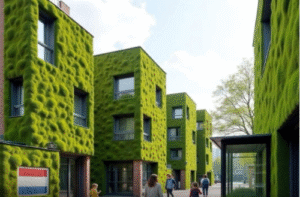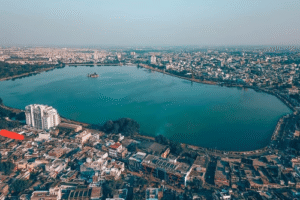The Indira Gandhi Canal, formerly known as the Rajasthan Canal, is one of India’s most significant irrigation projects, designed to transform the arid regions of Rajasthan by providing a reliable source of water. Here are more details about this extensive canal system:
The canal spans an impressive length of 959 kilometers (approximately 596 miles), making it the second-longest canal in the world after the Nile Canal.
It originates at Harike Barrage in Punjab, near the confluence of the Sutlej and Beas rivers, and extends deep into the arid regions of Rajasthan.
The canal traverses through the Indian states of Punjab and Rajasthan.
It primarily serves the Thar Desert region, covering areas in western and northwestern Rajasthan, including the districts of Sri Ganganagar, Bikaner, Jaisalmer, and Barmer.
The canal is a lifeline for Rajasthan, providing water for irrigation, drinking, and industrial purposes.
It has brought about a significant transformation in the agricultural landscape, turning previously barren lands into fertile agricultural fields.
The canal helps in the cultivation of various crops such as wheat, mustard, cotton, and gram, supporting the livelihoods of millions of farmers.
The canal’s extensive network includes 6,308 kilometers of distributary canals, which ensure efficient distribution of water to the agricultural lands.
This network ensures that even remote areas receive a consistent water supply, contributing to the socio-economic development of the region.
The construction of the canal began in 1958 and was completed in two phases.
Focused on the development of the canal system from Harike to Hanumangarh, mainly serving the northern districts.
Extended the canal to cover the areas of Bikaner, Jaisalmer, and Barmer, providing water to the western parts of Rajasthan.
The canal has helped in controlling desertification by reducing the spread of the Thar Desert.
It has also led to the creation of new ecosystems along its path, promoting biodiversity.
The canal has significantly boosted the economy of Rajasthan by enhancing agricultural productivity.
It has provided employment opportunities and improved the standard of living for the local population.
The canal also supports urban areas with a steady supply of drinking water, improving public health and sanitation.
The canal faces challenges such as waterlogging, salinization, and the need for regular maintenance.
Efforts are ongoing to manage these issues through improved irrigation techniques and water management practices.
The Indira Gandhi Canal stands as a remarkable feat of engineering, crucial for the sustainable development of Rajasthan, providing water security, supporting agriculture, and enhancing the overall quality of life in the region.







